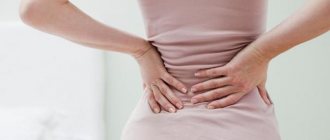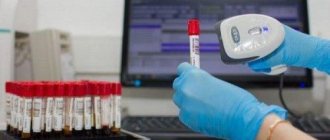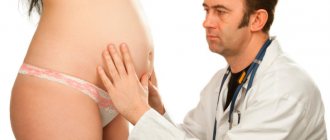Changes in the consistency, color and odor of stool can often indicate that a person is suffering from an illness. It is not surprising that most often it is diseases of the gastrointestinal tract that have a direct impact on changes in the characteristics of feces.
In a healthy person, the color of stool can vary from a light shade of brown to dark. At the same time, it should not have a pungent odor. However, not only disturbances in the body affect the color of stool, it can also be caused by other, completely harmless reasons. Why does stool turn light yellow?
Why does stool become lighter?
Normally, adult stool is light brown or dark brown in color. The shade is influenced by the level of the substance in the masses, which is produced as a result of the processes of pigment metabolism and bile secretion.
Stool becomes white or light-colored due to diseases of internal organs located in the abdominal region. However, more often the cause is the inclusion of certain foods in the diet, such as potatoes or mushrooms. In any case, you can determine the reason for the change in the color of stool by undergoing a comprehensive diagnosis.
Nutritional Features
A common reason for lightening of stool is the consumption of large amounts of milk or other dairy (fermented milk) products. The symptom also occurs when fatty foods are included in the diet and abused. It could be sour cream or butter.
With a similar etiology of the clinical picture, apart from the fact that the stool becomes discolored, no other discomfort occurs (no abdominal pain, vomiting, etc.). To eliminate the symptom, it is enough to adjust the diet by following a diet for several days. It is more difficult if there is diarrhea. You can suspect the presence of pathology based on some symptoms:
| Index | Norm | Pathology |
| Stool volume | Up to 2 times a day | More than 3-4 times a day |
| Consistency | Mushy or dense | Liquid |
| Hue | Dark yellow, light brown, dark brown | White, light yellow, green, black brown, red |
| Structure | Homogeneous | Heterogeneous, unformed, with impurities, foam |
| Smell | Characteristic, but without stench | With a sour, fetid odor |
| Impurities | Mucus or no inclusions at all | A large number of mucous veins, undigested food |
To treat diarrhea, antidiarrheal drugs are prescribed in combination with diet correction.
Drinking alcohol and taking drugs
Light-colored feces in an adult do not always mean abnormalities in the functioning of the body. Often, stool becomes light-colored after taking certain medications. These can be potent antibacterial drugs, anti-gout medications, anti-inflammatory drugs (non-steroidal and steroidal).
As a rule, discontinuation of drug treatment is not required, but you need to observe the color of the stool for several days. If the tint persists, you need to tell your doctor about it.
It also happens that stool becomes lighter after drinking alcohol. This can be explained by the fact that the liver cannot cope with the functions assigned to it due to the influence of the toxic components of alcohol. The situation gets worse if a person takes fatty foods in combination, which often happens during feasts and celebrations.
In addition to lightening of stools, hepatitis also causes darkening of urine, yellowing of the skin and sclera.
Alcohol abuse can cause the development of alcoholic hepatitis.
Under the influence of alcohol, hepatocytes (liver cells) are gradually destroyed, but do not have time to recover, since the person does not stop drinking alcohol.
During pregnancy
Changes in the shade of stool during pregnancy are caused by the same reasons as in other categories of people. This is a disruption of the digestive processes and a failure in the movement of feces in the intestines. Diarrhea or constipation occurs, and bloating occurs.
Many pregnant women develop dysbiosis. Feces acquire a light color due to disruption of the natural microflora in the intestines. Normally, this environment contains a larger number of beneficial bacteria and microorganisms that are involved in food digestion, absorption, and detoxification.
If pathogenic flora predominates, intestinal motor function and food digestion are disrupted, which affects the color and consistency of stool. Treatment of dysbiosis should only be carried out by a doctor, since many drugs are prohibited during pregnancy and can harm the fetus.
In pregnant women, at any month due to changes in hormonal levels, diseases that developed even before conception become aggravated. Therefore, there can actually be many reasons for the lightening of stool.
In childhood
White stool in childhood is a symptom that occurs due to:
- consuming large amounts of provoking foods (fermented milk, mushrooms, etc.);
- the presence of helminthic infestations in the intestinal environment, which creates conditions for disruption of the process of food absorption in the gastrointestinal tract;
- the development of corresponding diseases, for example, hepatitis, which occurs with a disruption in the production of bile fluid necessary for normal digestion.
To eliminate the symptom, the child is given plenty of water to drink. Mineral water with salts is useful. If the cause of discolored stool is a bacterial infection, antibacterial drugs are prescribed.
If there are helminthic infestations in a child under one year old or older, antiparasitic drugs are required.
If it is possible to detect light-colored stool in a child, you need to do a stool analysis. The fact is that the child’s body is not yet fully formed. Therefore, any pathological processes easily become chronic.
Stool color in children - the norm and its variations
When breastfeeding, your stool should be yellow or apricot in color.
The stool of children and adults is colored by the bile pigment bilirubin, a derivative of erythrocytes, red blood cells. The liver filters out this pigment, then removes it through the bladder and intestines. It is considered normal for children's stool to be brown in various shades.
If this is the stool of a newborn or a baby under one year of breastfeeding, then it is predominantly yellow or apricot in color. For bottle-fed or mixed-fed babies, a cream, brown or gray tint is added to the traditional color, depending on the type of complementary foods or formula.
In children older than one year, the color of the stool can be affected by the foods the baby eats. Thus, beets give the contents of the pot a red color, carrots give them a bright orange color, and drugs taken for anemia turn them dark brown or black. The predominance of meat products in baby food also turns the stool dark brown.
Diseases occurring with such symptoms
In most cases, light-colored stool means that a person has hepatitis. The disease has an infectious or alcoholic etiology. Other symptoms include nausea and vomiting, weakness, yellowing of the skin and sclera, and liver pain.
Another pathology is cholecystitis (inflammatory process in the gallbladder). There is severe pain from the organ, nausea, and the general temperature rises. In addition to changing the shade of stool, it becomes liquid and contains particles of undigested food.
Inflammation of the pancreas or pancreatitis also occurs with lightening of the stool. Among the causes of occurrence are frequent consumption of fatty foods, alcoholic beverages, and infectious damage to the organ. Acute pain occurs from the organ.
The inflammatory process in all intestinal walls is called Crohn's disease. Granulomas form on the mucous membranes - nodular formations due to abnormal cell proliferation. The clinical picture is similar to nonspecific ulcerative colitis.
Oncological damage to the gastrointestinal tract in the initial stages occurs without pronounced symptoms. As the disease progresses, vomiting and nausea occur, pain in a certain area, and body weight decreases. The feces acquire a light or, conversely, a dark shade.
Based on the shade of the masses
A light brown tint to the stool indicates that a person is overusing plant foods. In this case, the symptom does not harm health and is not considered a pathology requiring specific therapy. To restore intestinal function, it is recommended to add protein foods to the diet and switch to fractional meals.
White stool indicates a malfunction of the pancreas. This may be a symptom indicating the initial stage of diabetes or cancer of an organ. In such cases, stool becomes discolored not just once, but on an ongoing basis.
A shade closer to yellow indicates an increase in the level of production of the coloring pigment bilirubin. This is a normal phenomenon and does not require specific treatment.
The beige color of stool indirectly signals a narrowing of the bile ducts and unstable production of bilirubin. The source of changes can only be determined based on the results of instrumental diagnostics.
Diagnostics
A gastroenterologist is involved in identifying the cause of gray stool. The specialist collects anamnesis and complaints to determine why dyspeptic disorders appeared. Diagnostics includes instrumental visualization methods, which, if indicated, are supplemented with invasive techniques. To clarify the diagnosis, laboratory tests are prescribed. The most informative methods:
- Coprogram
. Microscopic analysis of grayish-white stool reveals remains of undigested food, muscle fibers, and starch grains. The absence of stercobilin is pathognomonic. To confirm the diagnosis of pancreatitis, a fecal elastase level test is performed. Bacteriological analysis is necessary to identify dysbiosis and bacterial overgrowth syndrome. - Blood chemistry
. With obstructive jaundice, cholestasis syndrome is determined - an increase in the amount of cholesterol and the enzyme alkaline phosphatase. An increase in ALT and AST levels indicates cytolysis and parenchymal jaundice. To test the exocrine function of the pancreas, the concentration of pancreatic lipase and amylase is measured. - Ultrasonography
. In order to detect the organic cause of a grayish-white stool, a survey ultrasound of the abdominal cavity is performed with targeted scanning of the organs of the hepatobiliary zone. The study allows you to visualize signs of the inflammatory process of the gallbladder, heterogeneous echogenicity of the liver parenchyma, and rounded volumetric neoplasms. - Duodenal sounding
. To assess the flow of bile into the intestine, several portions of bile are taken sequentially after stimulation with secretory drugs. Typically there is a slow release of bile or its complete absence in case of blockage of the common bile duct. The collected material is sent to the laboratory for bacteriological analysis. - Cholangiopancreatography
. White feces usually appear when the biliary tract is damaged, so RCCP is required. The method involves examining the papilla of Vater and bile ducts using endoscopic technologies. The study reveals stones in the bile ducts, signs of inflammatory and tumor pathologies.
Identifying the cause
Lightening of stool is a nonspecific symptom that is inherent in many diseases of internal organs. Therefore, it is impossible to determine the cause at home. To do this, you need to undergo a comprehensive examination of the body in the hospital. The diagnosis is made based on the results of instrumental and laboratory studies:
- a blood test that provides information about the inflammatory reaction (increased erythrocyte sedimentation rate, increased leukocyte volume, etc.);
- computed tomography, the results of which can assess the condition of internal organs;
- retrograde cholangiopancreatography, which is prescribed for a detailed study of the organs that produce and transport bile fluid;
- ultrasound examination of the abdominal organs to assess the condition.
In severe cases, urgent surgical treatment is performed to examine the bile ducts and identify abnormalities in the structure. After removal of the tumor-like neoplasm, a biopsy of the sample is prescribed, which makes it possible to determine its nature (malignant or benign).
Associated symptoms
Stool discoloration is not the only symptom that occurs with diseases of the internal organs. Therefore, during a comprehensive diagnosis, attention is paid to accompanying manifestations. It could be:
- elevated temperature;
- diarrhea or constipation;
- nausea and vomiting syndrome;
- pain in the epigastric region, from the left or right hypochondrium, radiating to the back, groin;
- yellowing of the skin and mucous membranes;
- decreased interest in food and noticeable weight loss;
- darkening of urine;
- flatulence, bloating.
If at least 2 of the above symptoms are present, this means that a disease is developing in the body, most often associated with the digestive system.
First of all, the gastrointestinal tract is diagnosed, and then other organs are examined.
Immediately after identifying the cause, treatment of the primary disease begins, which helps return the previous color to the stool. In chronic conditions, the shade is present on a permanent basis.
Teething
Something that seems to have absolutely no effect on the condition of the intestines, such as the eruption of baby teeth in a baby, can also affect the color of a child’s stool. Here you just have to be patient and try not to miss the appearance of respiratory or viral infections during this period of temporary decrease in immunity. It is not necessary that light-colored stools necessarily appear in all teething babies. However, if this symptom is accompanied by the following:
- swelling and redness of the gums
- restless and short sleep
- slight increase in temperature
- loose stool
- decreased appetite
To alleviate the condition, you can give a mild pain reliever and do not insist on feeding. After the teeth appear, the stool should return to normal.
Basic therapy
What to do and how to treat light-colored stool depends on the etiology of the symptom. If a change in the shade of stool is due to a violation of the digestive function, first of all a diet correction is required. If you have diarrhea in the first days, you need to adhere to a dietary diet with the exception of fatty and fried foods. Food is taken in ground form.
After several days, it is recommended to include fruits and vegetables and fermented milk products in the diet. Decoctions and infusions of medicinal herbs are useful. Food is taken fractionally, that is, in small portions, but often throughout the day. This makes it easier for the digestive system to function.
If the symptom is due to an infectious disease, antibacterial drugs are required. With a parasitic etiology of the symptom, antiparasitic drugs in the form of tablets will be required.
For liver diseases that occur with stool discoloration, hepatoprotectors are prescribed.
During the period of exacerbation of certain diseases (for example, pancreatitis or hepatitis), the patient is hospitalized urgently. If the symptom occurs due to the formation of a tumor-like neoplasm, chemotherapy or radiation therapy and surgery are prescribed.
Recommendations
If you notice any changes in your stool, do not despair. You need to calmly figure everything out, and if necessary, resort to additional diagnostic methods (laboratory, instrumental studies) and the help of qualified specialists. They will be able to make a definitive diagnosis and prescribe effective treatment if necessary.
Children's problems are perceived with the greatest trepidation, but fortunately, most often they are not serious. They consist of irrational nutrition, and for healing you just need to choose the right diet. And in good condition, just observation is enough, and after a few days the stool will recover on its own.
Proper nutrition and a healthy lifestyle are the main components of the well-being of the entire digestive system.
Treatment at home
If you have bloating and increased gas production due to impaired digestive function, you can take the following decoction orally: mix 30 g of angelica root (pre-crushed), 0.5 hot water, leave to infuse for 30 minutes, strain. Take 2 tbsp of the finished product. before eating.
For diarrhea, this infusion will help: take lingonberries, chamomile, yarrow in equal parts, mix, 2 tbsp. collection, pour 200 ml of hot water, leave for an hour, strain. Take the finished composition 100 ml twice a day.
For diseases of the liver and gall bladder, the following infusion will be effective: take 1 tsp. dried roots of the German iris, pour 400 ml of boiling water, leave to infuse for 2 hours, strain. Take the finished product 100 ml before meals.
For cholelithiasis, therapeutic exercises are useful, which increases blood circulation in the abdominal region. Doctors recommend pumping up your abs while sitting on a bench and performing leg exercises while lying down.
Medicines that change stool color
This symptom may be a side effect when using certain categories of medications. Stool becomes discolored due to the liver's reaction to certain medications. They may be:
- Paracetamol
- Acetylsalicylic acid derivatives: Aspirin, Laspal
- Non-steroidal anti-inflammatory drugs: Ibuprofen, Diclofenac, Nimesulide
- Antifungal: Griseofulvin
- Antiepileptic drugs: Acediprol, Valproic acid, Convulex, Leptilan
If such a reaction to the use of drugs occurs, you should consult with the specialist who prescribed the treatment in order to avoid complications for the liver and gastrointestinal tract.
Complications and prevention
One of the common complications when lightening stool is icteric syndrome. This can be explained by increased accumulation of bile fluid in the organs. Characteristic symptoms are yellowing of the skin and mucous membranes.
The type of negative consequences largely depends on the primary disease. For example, with the development of hepatitis, complications such as inflammatory diseases of the biliary tract and hepatic coma occur.
To prevent the occurrence of light-colored stool, the following recommendations should be followed:
- adhere to a balanced diet, do not abuse unhealthy foods (fatty and fried foods, as well as alcoholic beverages);
- observe the diet and eating conditions: frequent meals are useful, but in small portions, at the same hours every day, foods are subjected to heat treatment to eliminate pathogenic microorganisms;
- avoid overeating (standard portion - 300-400 ml in liquid form);
- control weight, treat obesity in a timely manner;
- stop smoking and taking drugs, eliminate stressful situations;
- lead an active lifestyle.
If the stool is discolored, this indicates a malfunction of a certain internal organ. The cause can only be determined by the results of a comprehensive diagnosis prescribed by a doctor.
Necessary measures
What to do with yellow diarrhea should be decided by the doctor after a preliminary examination and a full examination.
| Drink enough liquid. | To prevent dehydration, fluid loss should be regularly replenished. For minor diarrhea, which is not accompanied by signs of dehydration (dry skin and mucous membranes, rare urination, small volume of urine and its dark color, etc.), it is enough to drink a small amount of still water, herbal or weak black or green tea, decoction every 30 minutes dried fruits (50–100 ml:). If the first symptoms of dehydration are observed, rehydrating solutions may be required to replenish the deficiency of fluid and electrolytes in the body. Their use is allowed only with the permission of a doctor. |
| Do not take medications without a doctor's prescription. | Without knowing the cause of diarrhea, you can seriously harm your health with incorrectly selected medications. Therefore, all medications must be prescribed by a doctor. |
| Do not place a cold or hot heating pad on the abdominal area. | Heat and cold are relevant “tools” in the treatment of a number of diseases. But they can cause irreparable harm to health if used unnecessarily or with contraindications. |
| Follow a diet. | For the entire period of treatment, it is necessary to give preference to easily digestible simple foods: pureed porridge, baked potatoes, kefir, etc. Sweets, baked goods, fatty and spicy foods, pickles, vegetables and fruits with a high content of coarse fiber, alcohol and carbonated drinks should be excluded. |
Purchasing coloring
Normal - brown stool is caused by breakdown products of the bile pigment bilirubin. When excreted with bile into the small intestine, it is partially converted into colorless urobilinogen, and then in the large intestine through the stercobilinogen stage it becomes brown stercobilin. Another stool-coloring product of bilirubin metabolism is called mesobilifuscin. If the stool turns yellow, it indicates problems with digesting food and separating bile. Sometimes color changes are considered normal and occur due to dietary habits, under the influence of medications, and at certain periods of a person’s life.









